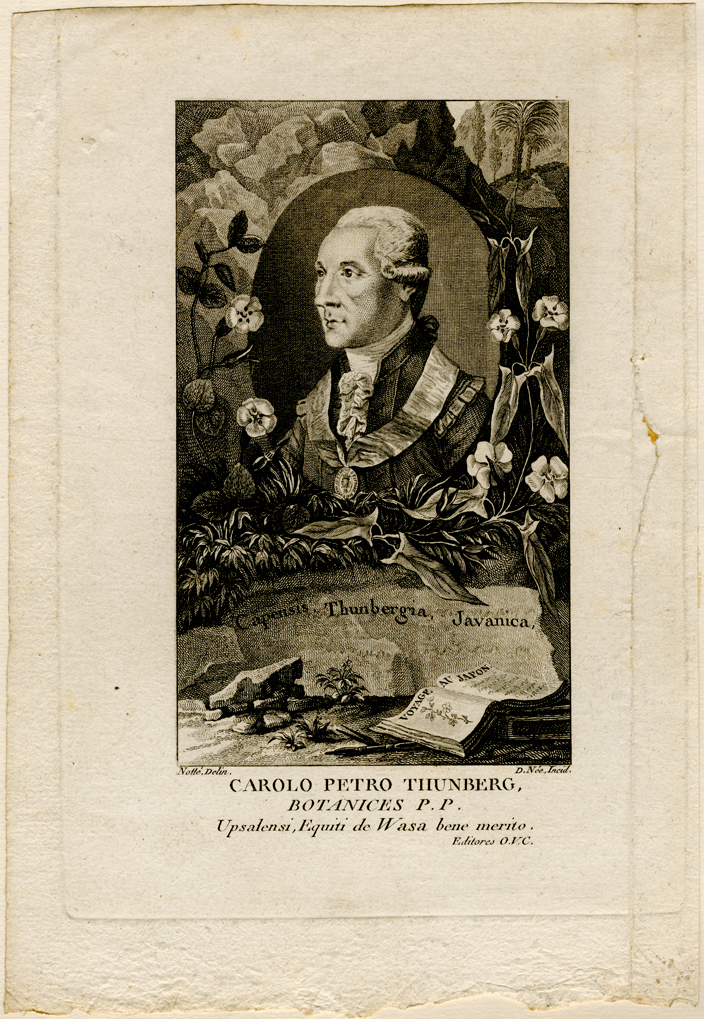
Carl Peter Thunberg
1743-1828.
Botanist, doctor.
In 1770, after studying with Carl Linnaeus, Carl Peter Thunberg embarked on a nine-year trip abroad that began in the Netherlands. There Thunberg met the most prominent botanists of the time.
Thunberg then studied medicine in Paris before sailing from the Netherlands to Cape Town as a ship's doctor, staying for three years to explore the nature of the area. These studies were documented in Flora capensis (1-3, 1807-1813). Thunberg was the first to describe the flora of South Africa and has therefore been called the father of South African flora.
In 1775 Thunberg continued to Japan where he collected material for his Flora japonica (1784). The work was epoch-making for the knowledge of Japan's plant world and Thunberg received the honorary name Japan's Linnaeus.
In 1779 Thunberg returned to Uppsala and in 1784 succeeded Carl Linnaeus the Younger as professor of medicine and botany.
Thunberg also published Resa uti Europa, Africa, Asia förrättad åren 1770-1779 (1-4, 1788-1793). The collections from the trips were deposited at the University Library.
Carl Peter Thunberg's farm Tunaberg north of Svartbäcken in Uppsala, where he lived for the rest of his long life, was known for its excellent horticultural crops well into the 1940s.
Burial site: 0101-0103
Image description: Portrait Carl Peter Thunberg, 1808, artist Pehr Krafft the Younger. Photo: Mikael Wallerstedt / GustavianumThe image is cropped]
Click here for an uncropped image


